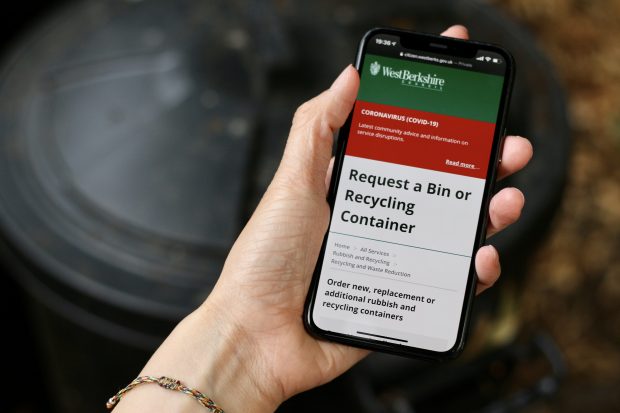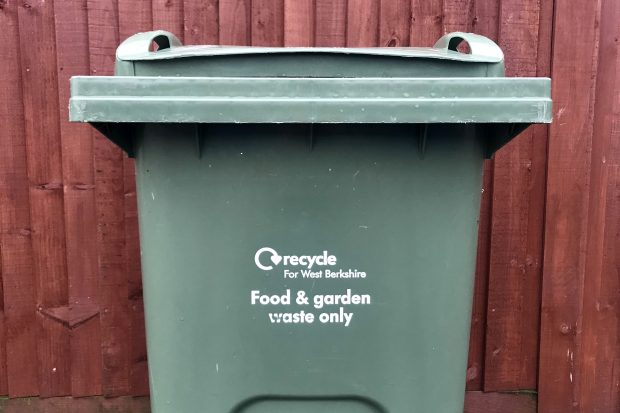
When your bins or recycling containers are damaged or lost, or if you need a bigger black bin, you need to contact the council to get a replacement. To do this, you need to call, email or submit an online request. This request will then be reviewed, processed, and approved by the council before the waste contractor is notified to go out and deliver whatever was requested.
At West Berkshire Council, this was all managed by a highly manual and inefficient system, which needed to be overhauled and replaced with a new digital solution. This is an example of building an integrated, end-to-end service, which streamlines the process, allows user requests to be actioned more efficiently, and saves time for the local authority.
Who are the users?
The users of the system are:
- residents: the people requesting a new bin
- caseworkers in the local council: need to review requests, then once approved, notify the waste contractor for the request to be filled
- staff of the waste contractor: employees of the company that actually provides the new bins once requests have been reviewed and approved
To build the new digital processes, the local council worked alongside a digital supplier to help build and expand their digital platform, integrating it with the existing back-end system used by the council and waste contractor.
What was the problem?
Whenever someone raised a request the council would have to review and approve the request manually, then rekey this request into the back-end system. Only then could the waste contractor complete the request. This was inefficient, since rekeying the requests significantly wasted time for council employees and created avoidable lags in getting people their replacement bins. It also increased the possibility of human error when transferring information to the bank-end system. All of this led to a lack of clarity for residents, who would often chase up via phone or email, which is costly and time consuming for the council to deal with.
The idea behind this project was to transform this system to a new digital solution, which was more accessible, secure, easy to use, and efficient. The aim was to collaborate with the waste contractor and the supplier of the council’s digital platform to build an end-to-end service which eliminated these inefficiencies by integrating the front-end user interface with the back-end system. This would automatically log requests without staff rekeying them, thus incorporating workflow into the digital process.
What was the solution?
Working with the digital supplier, West Berkshire Council designed and built a digital process for logging requests, so that staff no longer had to waste time rekeying these requests into their back end system. In most cases, these requests were then automatically approved, saving even more time for local authority staff. They also provided an interface with which to review those that still needed to be approved. Finally, the process would automatically update the waste contractor to complete the request.
To do this, the existing system was expanded by integrating it with the front-end user interface for logging requests online. These requests could then be automatically reviewed and approved or denied, before being handed off to the waste contractor.
In this way, the council – working alongside the digital platform supplier – developed a new, digital, end-to-end process. This new process allowed them (in most cases) to remove the need for any intervention in the process by the local council. The process was also streamlined and simplified, so there would be less support required from customer services. In addition, the requests passed straight through to the waste contractor, since approval was automated, and therefore there was no need to rekey the requests.

What were the outcomes and benefits?
Time savings for citizens
The new system made the experience and provision of a service for the user much more efficient. The need to rekey requests was eliminated, and therefore the requests would be automatically approved and sent to the waste contractor. This reduced lags in the time taken for requests to be filled. West Berkshire Council estimated that requests submitted in the week were processed roughly between a half and a full day sooner per request. For requests submitted at the weekend, these could be processed up to 2 days sooner per request, as it would not be until Monday morning that the request could be answered.
Cost savings for government
The new system allowed for over 24,000 rekeys to be avoided altogether, between April 2018 and August 2020. A simple request would take 2 minutes to rekey (although more complex requests could take up to 20 mins), and therefore roughly 800 hours were saved in these 20 months. The estimated value of this time saving is close to £12,000, based on the average salary of a local authority worker. There were also further time savings for staff by not having to manually review each individual request since the process was largely automated.
Additionally, given the increased clarity and speed with which requests were completed, users felt less need to contact customer services via phone or email, saving further time and resources. This was supported by the fact that the front end interface was more user friendly, making the process of logging a request easier online, and reducing the need to call or email the council.
Key challenges
This was a complex piece of work involving three council departments (Waste, Customer Services, and Digital), the waste contractor, and the digital platform supplier. However, over the course of the project, everyone pulled in the same direction.
Collaboration allowed for the development of a digital-based service that is much easier than the previous manual service. Given that this service does not require any human interaction for many of the transactions, it is far more feasible to provide an automated, user-friendly, and efficient end-to-end service. This kind of solution would be much more difficult to provide for services which are more human in nature, such as childcare or social services.
Conclusion
Taking a user-centred design approach is critical to developing an efficient end-to-end service, that works for users and saves them time. In this case, collaboration between all the entities involved in delivering the service – council departments, the waste contractor, and the digital platform supplier – was important so that each party understood the needs of the user and could build a solution that worked for everyone.
The benefits of this kind of collaboration are apparent, in the saved time and hassle for users in logging a request and having that request delivered upon, as well as the saved processing time for local council staff. This example demonstrates how digitising services has the potential to transform the way that people interact with government, and these principles can be applied whether it is a government department or a local council such as West Berkshire.
This blog post is part of a series on measuring the value of service transformation. If you have any questions, thoughts or examples of your own end to end service provision, we would like to hear from you. Email us at services-in-government@digital.cabinet-office.gov.uk to get in touch. Also, sign up to email updates for the Services in government blog to not miss a case study.